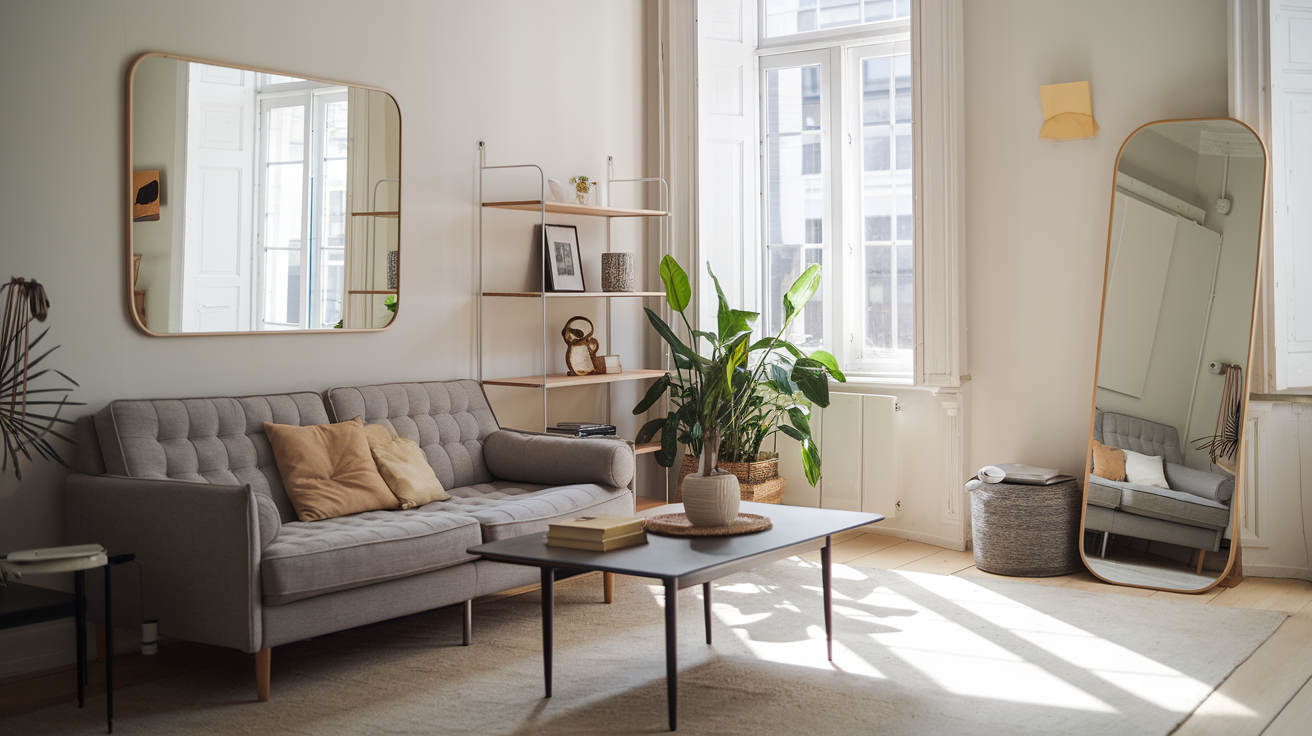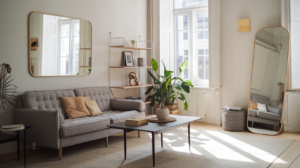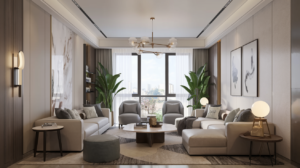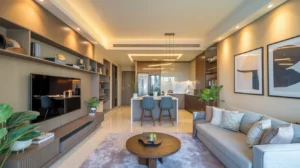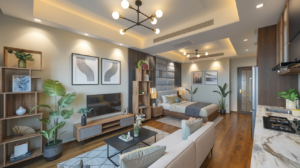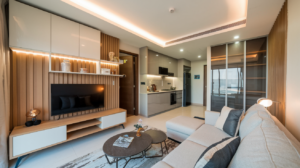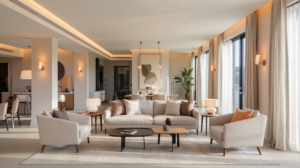Ever feel like your home is closing in on you?
It’s not just you—small spaces can feel cramped if not designed smartly. But here’s the good news: you don’t need to knock down walls or move out to make your home feel more open.
It’s all about smart design.
Whether you’re in a cozy apartment or trying to make the most of a compact home, these tips will help your space look and feel bigger.
Let’s dive into it.
1. Use Multifunctional Furniture
If you want to maximize your space, multifunctional furniture is your best friend. Why settle for one function when you can have two (or more)?
- Storage cabinets that double as benches
- Sofas with storage under the cushions
- Beds with rollout storage systems
- Bookcases that fold into tables
This way, you’re not only saving space, but you’re also making sure every piece of furniture earns its keep.
2. Keep It Organized
Clutter is the enemy. A small space filled with too many things can feel suffocating. Get intentional about what stays and what goes.
- Assign specific spots for everything
- Declutter regularly (seriously, it’s freeing)
- Rotate decor every few weeks to keep things fresh without overcrowding
Got something you’re not sure about? Put it in a transition box. If you don’t touch it in a month, it’s time to rehome it.
3. Paint Your Walls a Light Color
Light colors open up a room. They reflect light, making a small space feel airy and inviting.
- Stick to white or light shades—warm whites work wonders
- Avoid dark colors that absorb light and shrink the room
- Consider a seamless color palette that lets your eyes flow across the room
4. Use Accent Walls to Create Depth
Accent walls are an underrated trick for small spaces. Whether it’s a bold color or subtle wallpaper, an accent wall adds depth without taking up space.
- Choose one wall for a pop of color
- Go for larger patterns if you use wallpaper to avoid a cluttered look
5. Embrace Mirrors and Reflective Surfaces
Mirrors are magic in small spaces. They reflect light, creating the illusion of more space.
- Hang mirrors opposite windows for maximum effect
- Try reflective surfaces like glass or marble for added openness
- Consider tall, slender mirrors to draw the eye upward
6. Opt for Smaller, Low-Profile Furniture with Legs
Bigger isn’t always better. Low-profile, smaller furniture gives your space room to breathe.
- Choose furniture with legs to allow light and air to flow underneath
- Low sofas and chairs add to the feeling of openness
7. Choose Round Furniture
Ever tried walking around sharp corners in a small space? Round furniture not only saves space but softens the look of your room.
- Round coffee tables or ottomans are perfect for small living rooms
8. Space Between Furniture Is Key
Don’t cram furniture together. Give your pieces breathing room.
- Leave about 45–60 cm between large furniture
- Pull furniture away from the walls to create a sense of airiness
9. Go Vertical
Emphasize vertical elements to make your ceilings feel higher.
- Use floor-to-ceiling shelving
- Hang long curtains from above windows to the floor
- Vertical wall paneling can also stretch your space visually
10. Blinds Over Curtains
Heavy curtains can block light and feel bulky. Blinds are sleek and help bring in more daylight.
- Opt for blinds that match your walls for a seamless look
- Avoid shutters as they limit natural light
11. Layer Your Lighting
Multiple light sources make a room feel bigger at night. Don’t just rely on overhead lighting.
- Combine overhead lights, table lamps, and floor lamps
- Slim floor lamps or recessed lighting work great in small spaces
12. Install Sliding Doors
Sliding doors save floor space. Regular hinged doors eat up valuable room, while sliding ones keep everything compact.
- Pocket doors are even better—they disappear into the wall when opened
FAQs
1. How do you make a small room feel bigger?
Focus on light colors, multifunctional furniture, mirrors, and proper organization.
2. Is white the best color for small spaces?
Yes! White reflects light, making spaces look airy. But you can also explore other light, neutral tones.
3. What’s the ideal furniture for small spaces?
Low-profile furniture with legs works best. Opt for multifunctional pieces to save space.
By incorporating these tips, you’ll transform your space from cramped to cozy, and from limited to limitless.
Give it a try—you’ll be amazed at how much bigger your space feels!
